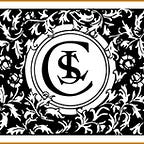“Wear a Gauze Mask”
Dealing with the 1918 Influenza Scourge
By Gary F. Kurutz
EDITOR’S NOTE
Gary Kurutz is the editor of the Bulletin, former executive director of the Foundation, and retired curator of special collections for the California State Library.
With the eruption of the COVID-19 pandemic, worldwide media coverage has been nonstop. Television, the Internet, social networking, newspapers, and other sources seemingly have been issuing updates on the hour. Naturally, those with an interest in history cannot help but reflect on past health crises. A search of the Internet will provide links and citations to many books and articles. Perhaps the best-known scourge to attack California was the 1918 Spanish flu epidemic. Found in the State Library’s California History Section ephemera collection is a rare broadside titled Influenza! printed in large letters. Distributed by the California State Board of Health in Sacramento and prepared by the Massachusetts State Department of Health, the single sheet measures 12-1/2 x 9 inches. Thankfully, someone on the staff had foresight to preserve this flimsy circular in the Library’s permanent collection.
This broadside includes much practical information that applies to our current pandemic. It states, for example: “The counsel here set forth has been prepared after consultation with some of the ablest medical men in America. If you follow the dictates of this official bulletin, you will be doing your duty to your fellow man and to yourself.” Keep in mind, this advice sheet was distributed shortly after the horrors of World War I. In a two-column section titled “What to Do Until the Doctor Comes,” it recommended upon feeling a sudden chill to get into bed at once and do not let anyone else sleep in the same room. Similar to today’s recommendations, it stated: “Insist that whoever gives you water or food or enters the sick room for any other purpose shall wear a gauze mask . . . which should cover the nose and mouth. Remember that these masks must be kept clean . . . and must be boiled five minutes and thoroughly dried every time they are taken off.”
The bottom third of this handout consists of three columns addressed to “Householders,” “Workers,” and “Nurses.” Here are a few of the practical examples. For householders, it advised: “Keep out of the sick room, keep away from crowded places, such as ‘movies,’ theatres, street cars,” and “open your windows at night.” Concerning workers, it recommended “walk to work if possible, wash your hands before eating,” and “do not use a common towel. It spreads disease.” The Board of Health gave additional instructions for nurses including: “Isolate your patients,” “change the mask every two hours,” “Insist that the patient cough, sneeze or expectorate into cloths that may be disinfected or burned,” and “boil all dishes.” All three categories stressed the need for sound sleep, walking in fresh air, and eating “good, clean food.”
The Government Publications Section of the State Library also has a number of pamphlet-size titles of suggestions and precautions regarding the 1918 influenza epidemic. The Library’s sizeable collections of newspapers and periodicals from that frightening time are loaded with firsthand accounts describing the spread of the disease and statistics of those who became sick or died.
The Epidemic Hits San Francisco
Among the amazing photographic treasures in the California History Section are two photograph albums created by Hamilton Henry Dobbin (1856–1930) of San Francisco.* He was a member of the San Francisco Police Department and witnessed many important events in the city’s history including the horrifying 1918 influenza epidemic. Dobbin took twenty-two candid shots with his camera of San Franciscans dealing with crisis. The policeman mounted them in the albums and thankfully labeled each image in his own hand identifying the scene. Some of his captions have a slight touch of humor as they show fellow officers warning citizens to wear a mask. A good portion of these show brave women donning white masks helping their beloved and frightened San Franciscans.
* For more information on Dobbin and his albums see Michael Dolgushkin, “A Look into San Francisco’s Past: The Hamilton Henry Dobbin Albums,” California State Library Foundation Bulletin, 97 (2010): 6–11.
This article came from Foundation Bulletin #127, pp. 32 to 35. See the foundation website (cslfdn.org) for more info.
